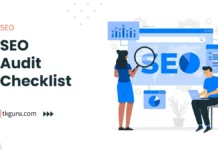Advertisements
Ratings

Meta Title and Description – In the vast landscape of search engine optimization (SEO), every element of your webpage plays a crucial role in determining its visibility and engagement.
Among these elements, meta titles and meta descriptions are the unsung heroes that can significantly impact your website’s click-through rates, user engagement, and search engine rankings.
The art of crafting compelling meta titles and descriptions is not only about ticking off technical boxes but also about capturing the essence of your content and enticing users to click through to your webpage.
In this comprehensive guide, we will explore the intricacies of writing meta titles and descriptions that not only satisfy search engine algorithms but also resonate with human readers.
From understanding the fundamental role of these elements to mastering the delicate balance between optimization and user experience, we will delve into the art of creating meta titles and descriptions that stand out in the crowded digital landscape.
Contents
1. Understanding Meta Titles and Descriptions
1.1 What are Meta Titles and Descriptions?
Meta titles and meta descriptions are HTML elements that provide concise information about the content of a webpage.
They serve as snippets that appear in search engine results, giving users a glimpse of what your page offers before they decide to click through.
While meta titles are the clickable headers, meta descriptions provide a brief summary of the content.
1.2 SEO Importance of Meta Titles and Descriptions
Meta titles and descriptions go beyond mere textual elements; they influence both user behavior and search engine rankings.
By crafting well-optimized meta elements, you can improve your click-through rates (CTR) and enhance the user experience, leading to better engagement and higher rankings on search engine results pages (SERPs).
2. Crafting Compelling Meta Titles
2.1 The Anatomy of an Effective Meta Title
An effective meta title comprises several components carefully woven together. It typically consists of the primary keyword, secondary keywords, your brand name, and must adhere to character limits to display correctly on search results.
Anatomy:
- Primary Keyword: This is the primary topic of your webpage.
- Secondary Keywords: Related keywords that support the primary topic.
- Brand Name: Your brand’s identity.
- Character Limit: Generally around 60-70 characters to ensure full visibility.
2.2 Using Keywords Strategically
Strategic keyword usage is essential for optimizing meta titles. However, the key is to balance optimization with user-friendliness.
Avoid keyword stuffing, which can lead to poor user experience and potential penalties from search engines. Focus on creating titles that accurately represent the content and entice users to click through.
Table 1: Crafting Meta Titles:
| Aspect | Description and Importance |
|---|---|
| Anatomy of an Effective Meta Title | Breaking down the structure of a compelling meta title. |
| Using Keywords Strategically | Discussing keyword usage for optimization. |
3. Writing Persuasive Meta Descriptions
3.1 The Role of Meta Descriptions
Meta descriptions serve as the bridge between search results and your webpage. They provide a concise summary of your content, aiming to capture users’ attention and entice them to visit your site. A well-crafted meta description can significantly impact click-through rates (CTR).
3.2 Showcasing Value Proposition
To write persuasive meta descriptions, focus on showcasing the value proposition of your content. Use compelling language that communicates benefits and solutions.
Address the user’s intent and pain points, explaining what they’ll gain from visiting your webpage.
Table 2: Writing Meta Descriptions:
| Aspect | Description and Importance |
|---|---|
| The Role of Meta Descriptions | Explaining the purpose of meta descriptions. |
| Showcasing Value Proposition | Discussing strategies for creating persuasive meta descriptions. |
4. Best Practices for Meta Titles and Descriptions
4.1 Keeping it Relevant
One of the fundamental principles of crafting effective meta titles and descriptions is relevance. Your meta elements should accurately reflect the content of your webpage.
Misleading or irrelevant meta titles and descriptions can lead to user frustration and negatively impact your click-through rates.
4.2 Avoiding Duplicate Content
Duplicate meta titles and descriptions across multiple pages can confuse both users and search engines. Each page on your website should have a unique set of meta elements tailored to its specific content.
This approach not only aids user comprehension but also prevents search engines from considering your content as duplicate.
Table 3: Best Practices for Meta Titles and Descriptions:
| Aspect | Description and Importance |
|---|---|
| Keeping it Relevant | Emphasizing the importance of relevancy. |
| Avoiding Duplicate Content | Discussing the pitfalls of duplicate meta elements. |
5. Testing and Optimization
5.1 Testing Meta Elements
The art of writing meta titles and descriptions involves continuous refinement. A/B testing is a powerful technique to determine which variations of your meta elements yield the best results.
By creating multiple versions of your meta titles and descriptions and analyzing their performance, you can fine-tune your approach for better click-through rates.
5.2 Leveraging Analytics
Analytics tools offer valuable insights into the performance of your meta elements. Monitor click-through rates, bounce rates, and user behavior to assess the effectiveness of your titles and descriptions.
Regularly reviewing these metrics enables you to make informed adjustments and improvements.
Table 4: Testing and Optimization:
| Aspect | Description and Importance |
|---|---|
| A/B Testing Meta Elements | Explaining the process of testing different variations. |
| Leveraging Analytics | Discussing the role of analytics in optimization. |
6. Case Studies: Effective Meta Elements
6.1 Real-Life Examples
Let’s delve into several real-life case studies that exemplify the profound impact of well-crafted meta titles and descriptions.
These examples showcase how strategic optimization and user-focused language can lead to improved click-through rates (CTR), higher user engagement, and ultimately better search engine rankings.
Case Study 1: Company A’s Improved CTR
Background: Company A, an e-commerce store, struggled with low click-through rates on its product pages.
Solution: By revising meta titles and descriptions to align with specific product queries and user intent, Company A saw a significant increase in CTR. They also incorporated compelling language highlighting unique selling points.
Outcome: The improved CTR led to higher organic traffic, resulting in increased sales and revenue. The careful optimization of meta elements showcased the power of personalized, value-driven content.
Case Study 2: Blog B’s Engagement Boost
Background: Blog B, a content-focused website, aimed to increase engagement on its blog posts.
Solution: By crafting descriptive and intriguing meta titles and descriptions that accurately represented the blog’s content, Blog B enticed users to click through.
Outcome: The higher CTR led to extended dwell time on the site, reduced bounce rates, and increased social sharing. The optimization of meta elements showcased the role of accurate representation in attracting and retaining readers.
Case Study 3: Service Provider C’s Local Dominance
Background: Service Provider C wanted to dominate local search results and attract more local customers.
Solution: By incorporating location-specific keywords into meta titles and descriptions, Service Provider C effectively targeted local users searching for their services.
Outcome: The optimized meta elements led to improved visibility in local search results, higher website visits, and an influx of qualified local leads. The case highlighted the importance of local targeting through meta optimization.
6.2 Key Takeaways from Case Studies
These case studies underscore several key takeaways:
- Alignment with User Intent: Crafting meta titles and descriptions that match user intent can lead to better CTR and engagement.
- Value Proposition: Highlighting unique selling points and benefits in meta elements can entice users to click through.
- Accuracy and Descriptiveness: Accurately representing the content in meta elements can lead to improved user satisfaction and reduced bounce rates.
- Local Targeting: Incorporating location-specific keywords can enhance local search visibility and attract relevant users.
By analyzing these case studies, you can gain insights into the strategic utilization of meta titles and descriptions to achieve specific goals and enhance the overall effectiveness of your digital presence.
Conclusion
In the dynamic realm of SEO, crafting compelling meta titles and descriptions is a blend of creativity and optimization.
These seemingly small textual snippets hold immense power in influencing user behavior and search engine visibility.
By understanding the art behind these elements, you can create a strong connection between your content and your target audience.
Remember that the ultimate goal is to provide users with accurate, enticing information that encourages them to explore your webpage and discover the value you have to offer.
As you embark on the journey of writing meta titles and descriptions, embrace the balance between SEO best practices and user-centered communication.
Keep refining your approach, testing different strategies, and staying attuned to your audience’s preferences.
By mastering this art, you’ll not only enhance your website’s search engine performance but also create a more engaging and satisfying experience for your visitors.
Meta Title and Description FAQs
What are meta titles and descriptions?
Meta titles and descriptions are HTML elements that provide concise summaries of a web page's content.
They appear in search engine results pages (SERPs) and play a significant role in conveying information to users and search engines.
Why are meta titles and descriptions important for SEO?
Meta titles and descriptions are important for SEO because they:
- Influence click-through rates from search results.
- Provide search engines with context about your page's content.
- Contain relevant keywords that can impact your page's ranking.
How should I create effective meta titles?
To create effective meta titles:
- Keep them concise (around 50-60 characters).
- Include your target keywords naturally.
- Ensure they accurately reflect the content of the page.
- Consider including your brand name if applicable.
What makes a good meta description?
A good meta description should:
- Be concise (around 150-160 characters).
- Provide a clear and compelling summary of the page's content.
- Encourage users to click by highlighting the value of the page.
How can I optimize my meta titles and descriptions for SEO?
To optimize your meta titles and descriptions:
- Include relevant keywords naturally but avoid keyword stuffing.
- Write unique titles and descriptions for each page.
- Craft compelling and informative copy that encourages clicks.
- Use action-oriented language to entice users to visit your page.
Meta titles and descriptions are crucial elements for both SEO and user engagement. By crafting well-optimized and compelling meta titles and descriptions, you can enhance your page's visibility in search results, attract more clicks, and provide users with accurate expectations about your content.
| Web Hosting | Website |
| WordPress | Google Adsense |
| SEO | Affiliate Marketing |
| Blogging | YouTube |
Recent Posts
- Top 6 SEO Companies in Ahmedabad 2024: Unlock Success with the Top SEO Companies in Ahmedabad
- Top 5 SEO Companies in Kanpur 2024: Discover the Top-Rated SEO Companies in Kanpur
- Quality vs Quantity: The Importance of High-Quality Backlinks
- E-A-T and SEO: Expertise, Authoritativeness, Trustworthiness
Related Tags
meta description generator, title and meta description examples, seo title and description generator, seo title examples, seo description examples, seo title meta description, which tool is used to write meta title and description, write in short about meta description in relation with seo






